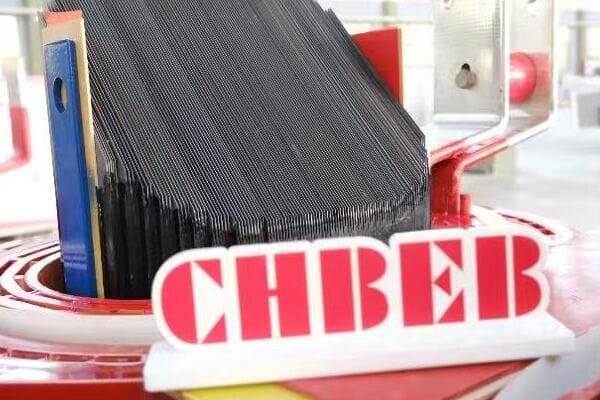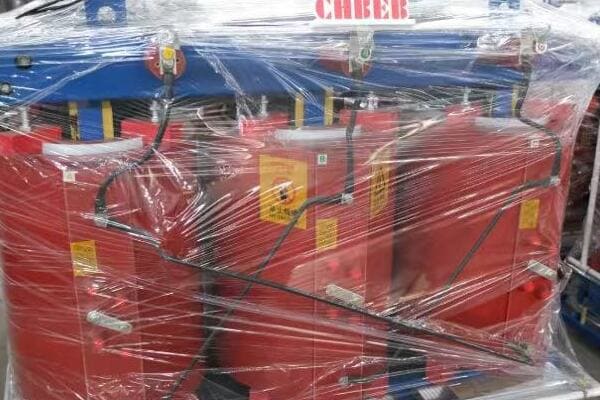How to Select the Right Dry Type Transformer for Industrial, Commercial, and Renewable Projects?
Are you struggling to choose the perfect dry type transformer for your project? You’re not alone. Many engineers and project managers find themselves overwhelmed by the myriad of options available. But what if you could easily navigate this complex decision-making process?
Selecting the right dry type transformer involves understanding your application environment, considering key parameters like power rating and efficiency, matching transformer types to project categories, ensuring compliance with safety standards, and balancing budget constraints with performance needs. This guide provides a step-by-step approach to help you make an informed decision.

In this comprehensive guide, I’ll walk you through the essential factors to consider when selecting a dry type transformer for industrial, commercial, or renewable energy projects. Whether you’re designing a new electrical system or upgrading an existing one, this article will equip you with the knowledge to make the best choice for your specific needs.
Understand Your Application Environment
Have you ever wondered why some transformers fail prematurely in certain environments? The answer often lies in mismatching the transformer to its application environment. But how can you ensure you’re choosing a transformer that will thrive in your specific conditions?
Understanding your application environment is crucial for selecting the right dry type transformer. Key factors include indoor vs outdoor installation, ambient temperature and humidity levels, and load variability. These conditions significantly impact transformer performance, lifespan, and maintenance requirements.
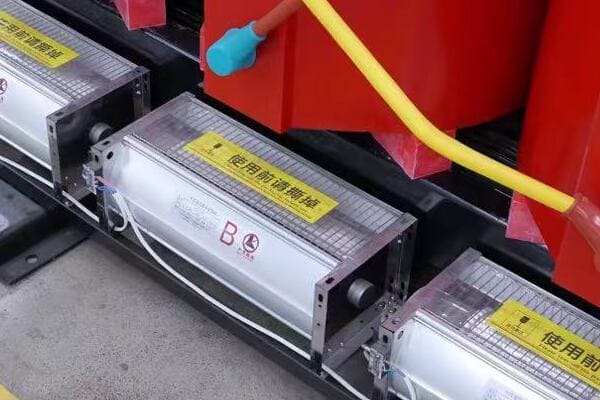
Diving Deeper into Application Environments
Let’s explore the key aspects of application environments that influence transformer selection:
Indoor vs Outdoor Installations
The location of your transformer plays a crucial role in its design and protection requirements:
- Indoor installations: Often require less environmental protection but may need enhanced fire safety features.
- Outdoor installations: Need robust protection against weather, UV radiation, and potential physical damage.
I once worked on a project where an indoor-rated transformer was mistakenly installed outdoors. Within months, we saw significant degradation due to moisture ingress. This experience underscored the importance of matching the transformer’s environmental rating to its actual installation location.
Ambient Temperature and Humidity Levels
Temperature and humidity can significantly impact transformer performance and lifespan:
- High temperatures: Can accelerate insulation aging and reduce efficiency.
- High humidity: Increases the risk of partial discharges and insulation breakdown.
In a recent project in a tropical climate, we opted for a transformer with enhanced cooling and specially treated insulation to withstand the high heat and humidity. This choice resulted in significantly improved performance and reliability compared to standard models.
Load Variability and Peak Demand
Understanding your load profile is essential for proper transformer sizing:
- Stable loads: Allow for more precise sizing and potentially smaller transformers.
- Variable loads: May require oversizing or special designs to handle peak demands.
I recall a renewable energy project where the highly variable load from wind turbines initially caused overheating in standard transformers. By implementing transformers with advanced cooling systems and higher short-term overload capacity, we were able to resolve the issue and optimize the system’s performance.
Here’s a quick reference table for environmental considerations:
| Environment Factor | Impact on Transformer Selection |
|---|---|
| Indoor Installation | Focus on fire safety, noise reduction |
| Outdoor Installation | Emphasis on weather protection, UV resistance |
| High Temperature | Need for enhanced cooling systems |
| High Humidity | Requires moisture-resistant insulation |
| Variable Load | May need oversizing or special designs |
Understanding these environmental factors is the first step in selecting the right dry type transformer. By carefully considering your specific application environment, you can ensure that the transformer you choose will operate efficiently, safely, and reliably throughout its intended lifespan. Remember, a transformer that’s perfectly suited for one environment may fail prematurely in another, so taking the time to assess these factors thoroughly is crucial for the success of your project.
Key Selection Parameters for Dry Type Transformers
Are you finding it challenging to navigate the technical specifications of dry type transformers? You’re not alone. Many professionals struggle to identify which parameters are truly critical for their projects. But what if you had a clear guide to the most important factors to consider?
Key selection parameters for dry type transformers include rated power and voltage class, impedance and efficiency, cooling method, fire safety class, and physical dimensions. Understanding these factors is crucial for choosing a transformer that meets your project’s specific requirements and ensures optimal performance and safety.
Essential Parameters for Transformer Selection
Let’s break down the critical factors you need to consider:
- Rated power & voltage class
- Impedance and efficiency
- Cooling method (AN / AF / ANAF)
- Fire safety class (F1 / E2 / C2)
- Mounting & footprint size
Rated Power and Voltage Class
The rated power (kVA) and voltage class are fundamental specifications:
- Rated power: Determines the transformer’s capacity to handle your load.
- Voltage class: Must match your system’s primary and secondary voltage requirements.
I once consulted on a project where the client initially underestimated their power needs. By carefully analyzing their future expansion plans, we were able to recommend a higher-rated transformer that accommodated their growth without requiring a costly upgrade later.
Impedance and Efficiency
These factors affect system performance and operating costs:
- Impedance: Influences fault current levels and voltage regulation.
- Efficiency: Directly impacts energy costs over the transformer’s lifetime.
In a recent industrial project, we opted for a slightly more expensive but higher efficiency transformer. The energy savings over just five years more than justified the initial cost difference, highlighting the importance of considering long-term operational costs.
Cooling Method
The cooling method affects the transformer’s capacity and installation requirements:
- AN (Air Natural): Simplest, but limited capacity.
- AF (Air Forced): Higher capacity, but requires fan maintenance.
- ANAF (Air Natural Air Forced): Flexible for varying loads.
For a data center project with variable loads, we chose an ANAF system. This allowed for efficient operation during low-load periods while providing extra cooling capacity during peak times.
Fire Safety Class
Critical for indoor installations and sensitive environments:
- F1: Limited flammability
- E2: Environmental hazard containment
- C2: Climatic hazard protection
In a hospital renovation project, selecting a transformer with F1 and E2 classifications was crucial for meeting strict safety regulations and ensuring patient safety.
Mounting and Footprint Size
Physical dimensions can be a critical factor, especially in retrofit projects:
- Consider available space and access for installation and maintenance.
- Factor in ventilation requirements based on the cooling method.
I recall a challenging urban substation upgrade where space was at a premium. By selecting a compact cast resin transformer with optimized cooling, we were able to increase capacity without expanding the existing transformer vault.
Here’s a quick reference table for these key parameters:
| Parameter | Importance | Considerations |
|---|---|---|
| Rated Power | Critical | Current and future load requirements |
| Voltage Class | Critical | Must match system voltages |
| Impedance | Important | Affects system fault levels |
| Efficiency | High | Impacts long-term operating costs |
| Cooling Method | Important | Affects capacity and maintenance needs |
| Fire Safety | Critical for indoor | Regulatory and safety requirements |
| Size | Varies | Installation space constraints |
By carefully considering these key parameters, you can ensure that the dry type transformer you select not only meets your current needs but also provides the flexibility and efficiency required for long-term success. Remember, the goal is to balance these factors to find the optimal solution for your specific project requirements.
Matching Transformer Types to Project Categories
Are you unsure which type of dry transformer is best suited for your specific project? You’re not alone. Many professionals find it challenging to match transformer types to different project categories. But what if you had a clear guide to help you make the right choice for your industrial, commercial, or renewable energy project?
Different project categories require specific transformer types. Industrial plants often need cast resin transformers with AF cooling for high loads and ambient heat. Commercial buildings benefit from AN cooling for silent operation. Renewable energy stations require ANAF or ANCF types to handle variable loads and outdoor conditions.
Detailed Transformer Type Recommendations
Let’s explore the best transformer types for various project categories:
| Project Type | Recommended Type | Key Feature |
|---|---|---|
| Industrial Plant | Cast Resin, AF Cooling | Handles high loads & ambient heat |
| Commercial Building | AN Cooling, Low Noise | Silent & maintenance-friendly |
| Renewable Station | ANAF / ANCF | Variable load, outdoor protection |
Industrial Plant Applications
For industrial environments, cast resin transformers with AF (Air Forced) cooling are often the best choice:
- High load capacity: Suitable for heavy industrial machinery.
- Ambient heat tolerance: Can withstand high temperatures common in industrial settings.
- Durability: Resistant to industrial pollutants and vibrations.
I once worked on a steel mill project where we implemented cast resin transformers with enhanced AF cooling. This choice allowed for reliable operation in the high-heat, dusty environment, significantly reducing downtime compared to their previous oil-filled units.
Commercial Building Applications
In commercial settings, AN (Air Natural) cooling with a focus on low noise is typically preferred:
- Silent operation: Crucial for office environments and public spaces.
- Low maintenance: Ideal for buildings with limited technical staff.
- Fire safety: Often comes with higher fire resistance ratings.
For a recent high-rise office project, we selected low-noise AN cooled transformers. The absence of cooling fans not only reduced noise but also simplified maintenance, a key factor for the building management team.
Renewable Energy Station Applications
Renewable energy projects often benefit from ANAF (Air Natural Air Forced) or ANCF (Air Natural Closed Forced) systems:
- Variable load handling: Adapts to fluctuating power generation.
- Outdoor protection: Designed to withstand diverse weather conditions.
- Efficiency: Optimized for the unique demands of renewable energy systems.
In a large solar farm project, we implemented ANAF transformers. Their ability to switch between natural and forced air cooling based on load allowed for efficient operation during both peak sunlight hours and lower generation periods.
Additional Considerations
When matching transformer types to projects, also consider:
- Future expansion: Choose a type that allows for potential load increases.
- Environmental factors: Consider local climate and pollution levels.
- Regulatory requirements: Ensure compliance with local and industry standards.
Here’s a more detailed comparison table:
| Feature | Industrial | Commercial | Renewable |
|---|---|---|---|
| Typical Load | High, consistent | Moderate, cyclical | Variable |
| Environment | Harsh, hot | Clean, controlled | Outdoor, variable |
| Noise Tolerance | Moderate | Low | High |
| Maintenance | Regular | Minimal | Periodic |
| Key Priority | Reliability | Quiet operation | Adaptability |
By carefully matching transformer types to your specific project category, you can ensure optimal performance, efficiency, and longevity of your electrical system. Remember, while these guidelines are generally applicable, each project has unique characteristics that may influence the final choice. Always consider your specific requirements and consult with experts when making your selection.
Certification and Safety Compliance Checklist
Are you concerned about ensuring your dry type transformer meets all necessary safety and compliance standards? You’re not alone. Navigating the complex world of certifications and safety requirements can be daunting. But what if you had a simple checklist to ensure your transformer meets all the crucial standards?
Ensuring compliance with safety standards and certifications is crucial when selecting a dry type transformer. Key requirements include IEC 60076-11 compliance, CE/UL/ISO certification, RoHS and fire safety class adherence, and availability of type test reports. Meeting these standards ensures safety, reliability, and legal compliance of your transformer installation.
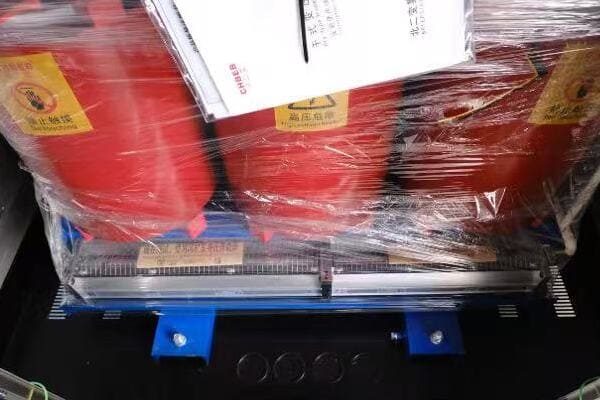
Essential Certification and Safety Checklist
Use this checklist to verify your transformer’s compliance:
✅ IEC 60076-11 compliance
✅ CE/UL/ISO certification
✅ RoHS & fire safety class
✅ Type test report availability
Let’s dive deeper into each of these critical compliance areas:
IEC 60076-11 Compliance
This international standard is specific to dry-type transformers:
- Covers design, testing, and application guidelines.
- Ensures global compatibility and quality standards.
I recall a project where a client initially considered a non-IEC compliant transformer to save costs. We demonstrated how IEC compliance not only ensured better quality but also simplified future maintenance and parts replacement, ultimately convincing them to choose a compliant model.
CE/UL/ISO Certification
These certifications are crucial for different markets and applications:
- CE: Essential for European markets, indicates compliance with EU health, safety, and environmental standards.
- UL: Important for North American markets, focuses on product safety.
- ISO: Demonstrates quality management in manufacturing processes.
In a recent global project, having transformers with both CE and UL certifications allowed for seamless deployment across multiple countries, saving time and reducing compliance headaches.
RoHS and Fire Safety Class
These standards address specific safety and environmental concerns:
- RoHS: Ensures the transformer is free from hazardous substances.
- Fire safety classes (e.g., F1, E2, C2): Indicate the transformer’s behavior under fire conditions.
For a data center project, selecting transformers with high fire safety class ratings was crucial. It not only met stringent building codes but also reduced insurance costs for the client.
Type Test Report Availability
Type test reports provide crucial performance and safety data:
- Verify the transformer’s performance under various conditions.
- Include tests for temperature rise, short circuit withstand, and noise levels.
I always advise clients to review these reports thoroughly. In one case, this careful review revealed that a transformer, while meeting basic specifications, wouldn’t perform optimally under the specific high-altitude conditions of the installation site, leading us to select a more suitable model.
Additional Compliance Considerations
Consider these additional factors for comprehensive compliance:
- Local regulations: Some regions may have specific requirements beyond international standards.
- Industry-specific standards: Certain industries (e.g., healthcare, military) may have additional compliance needs.
- Environmental certifications: Increasingly important for green building projects and corporate sustainability goals.
Here’s a quick reference table for compliance requirements:
| Compliance Area | Importance | Key Benefit |
|---|---|---|
| IEC 60076-11 | Critical | Ensures global quality standards |
| CE Certification | Essential for EU | Demonstrates EU safety compliance |
| UL Certification | Critical for NA | Indicates product safety for North America |
| ISO Certification | Important | Verifies quality manufacturing processes |
| RoHS Compliance | Environmental | Ensures absence of hazardous substances |
| Fire Safety Class | Safety Critical | Determines behavior under fire conditions |
| Type Test Reports | Verification | Provides performance and safety data |
By ensuring your chosen transformer meets these certification and safety compliance standards, you not only guarantee its quality and reliability but also protect your project from potential legal and safety issues. Remember, compliance isn’t just a box-ticking exercise – it’s a crucial step in ensuring the long-term success and safety of your transformer installation.
Budget vs Performance: How to Make the Tradeoff
Are you struggling to balance your budget constraints with the need for high-performance transformers? You’re not alone. Many project managers find themselves torn between cost-saving measures and ensuring optimal system performance. But what if you could find the sweet spot that offers the best value for your investment?
Balancing budget and performance in dry type transformer selection involves considering initial costs against lifecycle expenses, evaluating energy efficiency for long-term savings, assessing maintenance requirements, and weighing customization needs. The goal is to find a solution that offers the best total cost of ownership while meeting performance requirements.
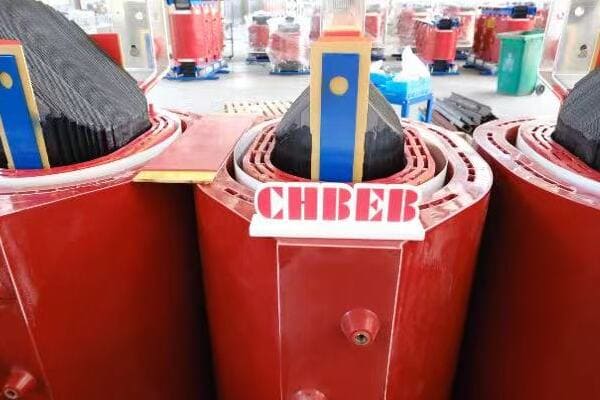
Key Factors in the Budget-Performance Balance
Let’s explore the critical aspects to consider:
- Initial cost vs lifecycle cost
- Energy efficiency ROI
- Maintenance & spare parts availability
- Customization flexibility
Initial Cost vs Lifecycle Cost
While the upfront price is important, it’s crucial to consider the total cost of ownership:
- Initial cost: Includes purchase price and installation.
- Lifecycle cost: Encompasses energy consumption, maintenance, and potential replacements.
I once worked with a client who initially opted for the cheapest transformer option. However, after we conducted a 20-year lifecycle cost analysis, they realized that a more expensive, higher-efficiency model would actually save them money in the long run due to lower energy losses.
Energy Efficiency ROI
Investing in energy-efficient transformers can lead to significant long-term savings:
- Higher efficiency models cost more upfront but consume less energy over time.
- ROI calculation should consider local electricity rates and expected load profiles.
In a recent industrial project, we chose a transformer with 20% lower losses than the standard model. The extra cost was recovered in just 3 years through energy savings, with substantial benefits accruing over the transformer’s 25-year lifespan.#### Maintenance & Spare Parts Availability
Consider the long-term costs and implications of maintenance:
- Lower-cost transformers might require more frequent maintenance or have shorter lifespans.
- Availability and cost of spare parts can significantly impact long-term expenses.
I recall a project where a client chose a less common transformer model to save on initial costs. However, when a critical component failed, the long lead time for spare parts resulted in costly downtime that far exceeded the initial savings.
Customization Flexibility
Sometimes, paying more for a customized solution can be more cost-effective:
- Standard models might require expensive modifications to fit specific needs.
- Custom solutions can optimize performance for unique environments or load profiles.
In a recent renewable energy project, we opted for a slightly more expensive custom-designed transformer. This decision allowed for better integration with the variable load profile of wind turbines, ultimately improving overall system efficiency and reducing operational costs.
Making the Right Decision
To help you make an informed decision, consider the following steps:
-
Calculate Total Cost of Ownership (TCO):
- Include initial cost, energy losses, maintenance, and expected lifespan.
- Use this formula: TCO = Initial Cost + (Annual Energy Cost + Annual Maintenance Cost) × Expected Lifespan
-
Evaluate Energy Efficiency:
- Compare annual energy costs of different models.
- Consider future energy price trends in your calculations.
-
Assess Maintenance Requirements:
- Factor in the cost and frequency of required maintenance.
- Consider the availability and cost of spare parts.
-
Consider Future Needs:
- Will your load requirements change over time?
- Is there potential for system expansion?
-
Analyze Environmental Impact:
- More efficient transformers have a lower carbon footprint.
- Some regions offer incentives for energy-efficient choices.
Here’s a comparison table to help visualize the tradeoffs:
| Factor | Economy Model | Mid-Range Model | High-Performance Model |
|---|---|---|---|
| Initial Cost | Low | Medium | High |
| Energy Efficiency | Basic | Good | Excellent |
| Maintenance Needs | Frequent | Moderate | Minimal |
| Customization | Limited | Some Options | Highly Flexible |
| Lifespan | Shorter | Average | Longer |
| Best For | Short-term projects, budget constraints | Balanced performance and cost | Long-term efficiency, specific needs |
Remember, the cheapest option isn’t always the most cost-effective in the long run. By carefully considering these factors and calculating the total cost of ownership, you can make a decision that balances your budget constraints with performance needs, ensuring the best value for your investment over the transformer’s entire lifespan.
Need Help Choosing?
Are you still feeling uncertain about which dry type transformer is best for your project? Don’t worry – you’re not alone in this complex decision-making process. But what if you could get expert guidance tailored specifically to your project’s unique requirements?
Selecting the right dry type transformer involves balancing numerous factors including application environment, technical specifications, compliance requirements, and budget constraints. Our team of experienced engineers can provide personalized recommendations based on your specific project needs, ensuring you get the optimal solution for your industrial, commercial, or renewable energy application.
How We Can Help
At chbeb-ele, we understand that every project is unique. That’s why we offer personalized consultation services to help you make the best choice. Here’s how we can assist:
-
Project Assessment:
- We’ll analyze your specific application requirements.
- Our team will consider factors like load profile, environmental conditions, and space constraints.
-
Technical Matching:
- We’ll match your needs with the most suitable transformer specifications.
- Our recommendations will balance performance, efficiency, and cost-effectiveness.
-
Compliance Verification:
- We’ll ensure all recommended options meet relevant safety and regulatory standards.
- Our team stays up-to-date with the latest industry certifications and requirements.
-
Cost-Benefit Analysis:
- We’ll provide a detailed comparison of initial costs vs. long-term benefits.
- Our analysis will help you understand the total cost of ownership for different options.
-
Custom Solutions:
- If standard options don’t fit, we can explore custom-designed transformers.
- Our engineering team can develop tailored solutions for unique project needs.
Why Choose Our Expertise?
- Decades of Industry Experience: Our team has worked on diverse projects across industrial, commercial, and renewable energy sectors.
- Up-to-Date Knowledge: We stay current with the latest transformer technologies and industry trends.
- Unbiased Recommendations: We’re not tied to any single manufacturer, ensuring you get the best solution, not just the most profitable for us.
- Post-Selection Support: Our assistance doesn’t end with your purchase – we offer ongoing support for installation and maintenance queries.
Take the Next Step
Don’t let uncertainty hold your project back. Reach out to us for expert guidance on selecting the perfect dry type transformer for your needs.
📩 Get a Tailored Recommendation:
Contact our engineering team today for a custom transformer selection consultation. We’ll help you find a solution that saves energy, reduces risk, and extends equipment life – all while meeting your budget requirements.
🔍 What to Prepare:
To make the most of our consultation, have the following information ready:
- Project type and location
- Expected load profile and capacity requirements
- Environmental conditions of the installation site
- Any specific compliance or certification needs
- Budget constraints and long-term operational goals
Remember, the right transformer choice can significantly impact your project’s success, efficiency, and long-term costs. Let our expertise guide you to the best decision for your unique needs.
Conclusion
Selecting the right dry type transformer is crucial for project success. Consider your application environment, key technical parameters, project category, safety compliance, and budget-performance balance. By carefully evaluating these factors and seeking expert advice when needed, you can ensure optimal performance, efficiency, and longevity for your transformer installation.
I believe that sharing knowledge is crucial in this rapidly changing field. That’s why I’m committed to providing accessible, in-depth information about power systems, including topics like transformer selection and application. My goal is to help professionals like Jacky, an experienced electrical engineering designer, stay updated on the latest developments and best practices in power equipment design and application.
At chbeb-ele, we’re dedicated to empowering a secure, clean, and efficient energy future. We continue to share our knowledge and insights, building a community of informed professionals who can contribute to shaping the future of energy systems.
I encourage you to explore more of our content, engage with our community, and share your own experiences. Together, we can work towards more efficient, reliable, and sustainable energy solutions.
Thank you for joining me in this exploration of dry type transformer selection. Stay curious, stay informed, and let’s keep pushing the boundaries of what’s possible in power distribution and electrical engineering.
Remember, at chbeb-ele, we’re not just sharing information – we’re empowering you to be part of the solution in creating a secure, clean, and efficient energy future. Let’s continue this journey together.
Free CHBEB Transformer Catalog Download
Get the full range of CHBEB transformers in one catalog.
Includes oil-immersed, dry-type, pad-mounted, and custom solutions.
Quick Message
Request A free quote
We'd like to work with you
- +86 15558785111
- [email protected]
- +86 15558785111
What We Do
CHINA BEI ER BIAN (CHBEB) GROUP, with 218 million in registered capital, originated from Beijing Beierbian Transformer Group. Headquartered in Beijing for R&D, it operates major production bases in Nanjing and Yueqing, producing high-quality products.
Latest Product
address
BeiJing
No 3,RongJing East Road,BeiJing Economic Technological Development Area,BeiJing,China
JiangSu
No 7️Xiangfeng Road,Jiangning,NanJing,JiangSu,China
WenZhou
No.211, Wei 16 Road, Industrial Zone, Yueqing, Wenzhou, Zhejiang, China.
XiangYang Industrial Zone ,YueQing,WenZhou,ZheJiang,China
contact us
- [email protected]
- +86 13057780111
- +86 13057780111
- +86 15558785111
Copyright © Bei Er Bian Group

